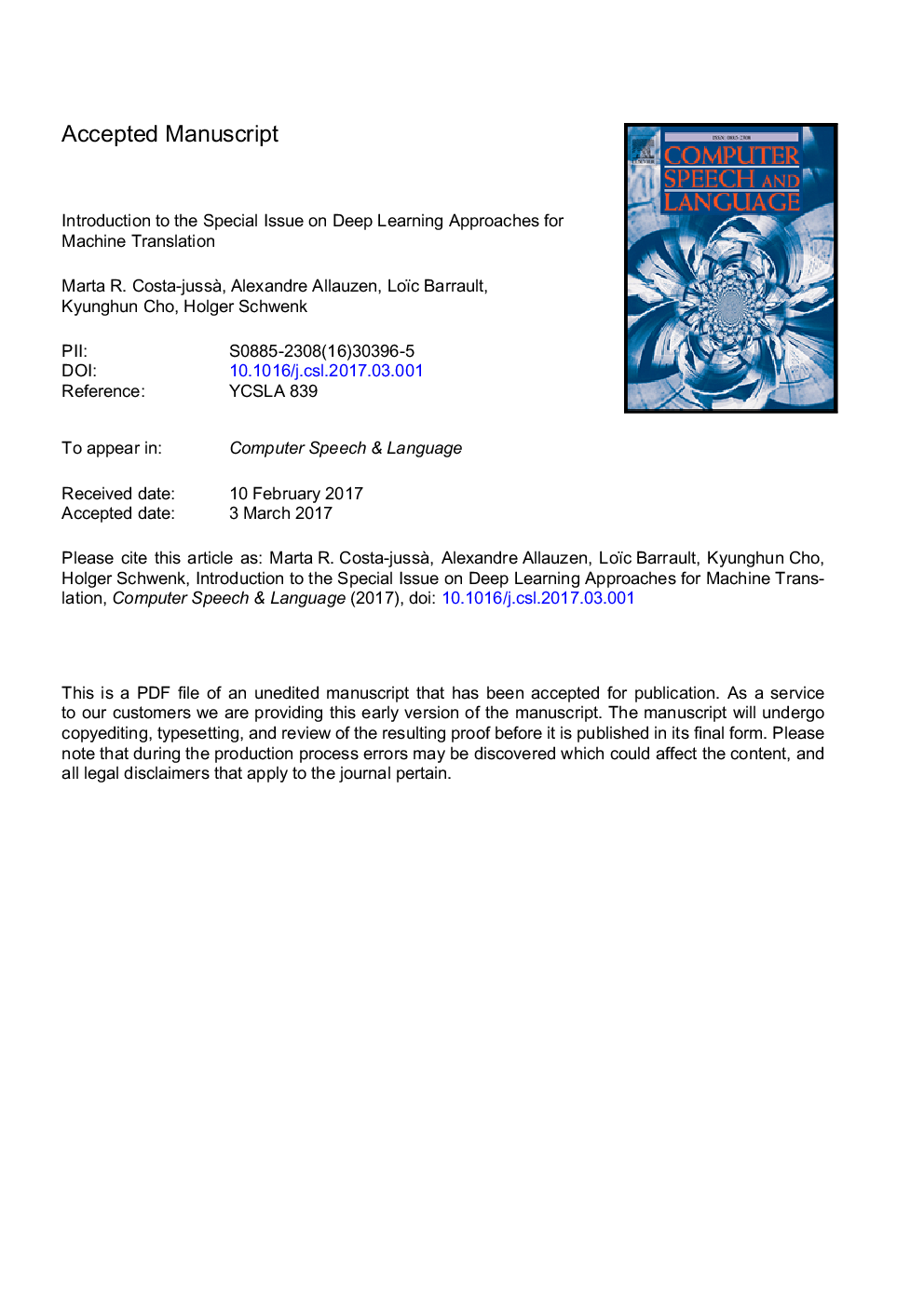| Article ID | Journal | Published Year | Pages | File Type |
|---|---|---|---|---|
| 4973719 | Computer Speech & Language | 2017 | 16 Pages |
Abstract
Deep learning is revolutionizing speech and natural language technologies since it is offering an effective way to train systems and obtaining significant improvements. The main advantage of deep learning is that, by developing the right architecture, the system automatically learns features from data without the need of explicitly designing them. This machine learning perspective is conceptually changing how speech and natural language technologies are addressed. In the case of Machine Translation (MT), deep learning was first introduced in standard statistical systems. By now, end-to-end neural MT systems have reached competitive results. This special issue introductory paper addresses how deep learning has been gradually introduced in MT. This introduction covers all topics contained in the papers included in this special issue, which basically are: integration of deep learning in statistical MT; development of the end-to-end neural MT system; and introduction of deep learning in interactive MT and MT evaluation. Finally, this introduction sketches some research directions that MT is taking guided by deep learning.
Keywords
Related Topics
Physical Sciences and Engineering
Computer Science
Signal Processing
Authors
Marta R. Costa-jussà , Alexandre Allauzen, Loïc Barrault, Kyunghun Cho, Holger Schwenk,
